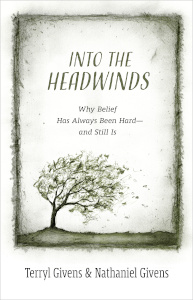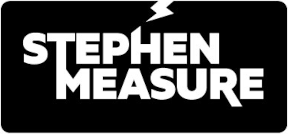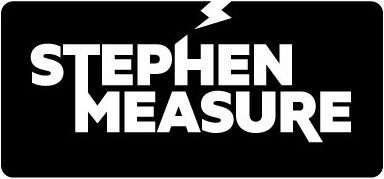Review: "Into the Headwinds"

Wisdom is of great value to me, so I feel incredibly blessed to live in a time when we have access to thousands of years of human history in which to find it: the records of prior civilizations, the lives and writings of great men and women, philosophies, religions. The wisdom of the dead surrounds us. All we have to do is be willing to seek it out and to listen. But the living have wisdom to share as well, and in that spirit I can recommend the Givenses’ recently released book, Into the Headwinds: Why Belief Has Always Been Hard—and Still Is, an insightful defense of religious faith.
Into the Headwinds was written by Terryl and Nathaniel Givens (father and son), but it is not simply their own opinions on the matter. One of this book’s strengths is the many different sources the Givenses pull in, weaving the thoughts of others with their own to provide more weight and to transform a duet into a chorus.
What is Faith?
The Givenses begin by defining what they mean by faith: “faith is costly religious commitment that is maintained in the face of opposition.” They further state: “Faith is what is manifest when a belief is maintained past the point of being easy or costless.” These are fine definitions to begin with, but I find a description they use later in their book even more compelling: “Faith involves an expansion of the domain of rationality.”
Let me stop for a moment and point out that this book is defending individual faith and in particular an individual choosing to have faith, not being forced to. I am speaking for myself here (this is not something I recall this book directly discussing), but there is a huge difference between an individual choosing for themselves whether or not to exercise faith versus a society imposing “faith” on their citizens through government coercion. This is something that can go wrong in both ways. Secularists might claim that an individual shouldn’t believe anything that cannot be conclusively proven to be true through scientific means (the Givenses argue against this, and I agree with them), but a believer in an organized religion might in contrast decide that since their beliefs are true, according to their own thinking, then a good society is one wherein their “true” beliefs are imposed on everyone. This is an example of when we need to heed the wisdom of the dead. Such imposed “faith” has been the norm for much of human history, but we have been blessed in our age with the enlightened idea of a secular neutrality, a common ground based on proof upon which governmental power must be based. But if you won’t listen to the dead, then consider your own experience to understand why imposing faith is unjust. Consider this question: Should a man who believes he is a woman have a legal right to change in the female dressing room? There is a provable physical reality here, subject to verification and falsification, that clearly shows he is a man. Yet there are also claims of an unprovable transcendental realm of identity, not subject to verification or falsification, that some believe should override physical reality. To me, that is faith. And to require people to treat gender identity as true is an example of imposed faith. Hopefully that helps the religious understand why imposing faith is unjust. Regardless, imposed faith is not what this book is about; rather, it has to do with individuals choosing to have faith. That is the point I wanted to make with this digression, which I will end now.
Rationalism Distorts Reason
In Into the Headwinds the Givenses confront two “competitors” to organized religion: rationalism and scientism. Rationalism, as described by the Givenses here, claims human reason should be granted a “virtually exclusive role as a guide to truth, knowledge, and life.” However, as Jonathan Haidt has said: “Anyone who values truth should stop worshiping reason.” This is because, according to cognitive studies, it doesn’t appear that human reason evolved to help us “find truth” but instead is more suited to “help us engage in arguments, persuasion, and manipulation in the context of discussions with other people.” (Jonathan Haidt again). In Steven Pinker’s words: “We are organisms, not angels, and our minds are organs, not pipelines to the truth. Our minds evolved by natural selection to solve problems that were life-and-death matters to our ancestors, not to commune with correctness.”
The Givenses discuss cognitive biases, which “systematically make it harder for us to find our way to the truth” and which can actually become “supercharged” the more intelligent we are. But the core of their argument is based on the divided-self model of the human mind. To illustrate this concept, consider the example of driving a car. Normally (I hope) when you are driving, your attention is on the road. You are noticing the other drivers and what they are doing, you are planning for what turns are coming up, etc. But if you have ever regularly driven a long commute, have you ever had the experience where you suddenly realize you don’t remember the last ten miles of driving? You “zoned out”, your conscious mind taking up a different subject for entire minutes of time, yet there you are, driving safely between the lines.
The point is that our mind can be thought of as having two parts: a habit-based intuitive part, and an active thinking part. The active thinking part is what we typically identify as our consciousness whereas the habit-based intuitive part might be referred to as our subconscious. The Givenses use an analogy from Jonathan Haidt to describe this: the elephant and the rider, where the elephant is the habit-based subconscious constantly going on in the background, whereas the rider is the active thinking process you are actually aware of. The elephant is constantly operating, taking in sensory input and acting in instinctive ways. The rider can attempt to control it, but it is more difficult to do than you might expect. There is a reason why Jonathan Haidt chose the analogy of an elephant instead of something more manageable.
For one thing, the elephant controls the flow of information to the rider: “The rider has no access to our senses except through the data that is provided by the elephant as output from complex, highly evolved, unconscious processes that handle all the work of constructing a model of the world from the raw data of light and vibration before our conscious processes have any idea that anything has taken place at all.” In the end, it appears our subconscious actually provides the actual “answer to moral questions” with the rider, which we assume is in charge, just providing an “explanation for that answer.”
As a result, people don’t often know what they actually believe. They believe that they believe something, but their actions demonstrate that, in truth, they don’t actually believe what they thought they did. The elephant has known the whole time of course, but it is the rider that we are aware of, and the rider misled us. Even when we prove through our actions that we believe something, we might incorrectly assume we believe it because the rider has decided it was true, when it is more likely we believe it because the elephant decided it was useful.
Scientism Is a Caricature of Science
In the same way that rationalism distorts the truth about human reason, scientism distorts the truth of what science can and cannot do. It presents the myths that science is a “wholly rational pursuit” and the “only reliable means of finding genuine Truth”. For the first myth, the Givenses point out how many of the advancements of science were intuitive leaps. People believed things and sought data to back up their belief. Supporters of scientism have an idolized version of science, imagining it as an orderly process, with each discovery simply added on top of the last one, when the reality is that the “scientific process is a messy affair, full of blind alleys and abandoned digressions.”
Another key point is that we can only “measure what we have the tools to detect” and can only work with the information that is available to us. I love the example the Givenses provide about the Big Bang and the expanding universe. The theory of the Big Bang was developed because it was observed that other galaxies were moving away from us. But, given that the galaxies are moving away from us, in some far future day, they will no longer be visible. Imagine if you lived in that future day and looked out around you and saw nothing. You would wrongly assume that nothing was out there, simply due to the lack of information available to you, yet that is all that science has to work with, and as a result: “we can never be sure that we know the whole story.”
Reasoning About Faith
In the last chapter, the Givenses tackle faith itself. The feeling here is different, as the Givenses shift from rational criticism to intuitive persuasion. They point out that “there are vast segments of reality that defeat our best efforts to measure, quantify, or fully access them”, and they give dark matter and dark energy as examples of that in science. They then equate that with an inability to “detect spiritual realities directly”, yet when we look at the experiences of our life, there seems to be something there, something not measurable yet something that must be there for our lives to make sense.
Nothing said here conclusively proves that there is something there—because we are talking about things for which no scientific proof can exist. Instead, it is an invitation to believe, an invitation to expand what you individually are willing to consider as evidence. For, as the Givenses put it: “Faith involves an expansion of the domain of rationality.”
Wisdom, For Those Who Seek It
Wisdom is all around us. All we have to do is be willing to seek it out and to listen. Into the Headwinds is a source of that wisdom: wisdom about human reason, wisdom about science, wisdom about faith. How fortunate Terryl and Nathaniel Givens are to have been able to write it together, father and son. Speaking myself as a son whose father is nearing the final steps of a descent into Alzheimer’s, I think Nathaniel is very lucky to have been able to partner with his father in an intellectual project such as this. But I have to think that Terryl is even more fortunate. A parent lovingly teaches their child, seeking to persuade them to believe as they believe, hoping their child will one day choose to follow in their footsteps. Throughout Into the Headwinds, as the narrator stated their thoughts and opinions, I kept seeing the word “we”. Of all the blessings a parent might ask for, surely that is one of the greatest.
Publisher’s link for: Into the Headwinds.


